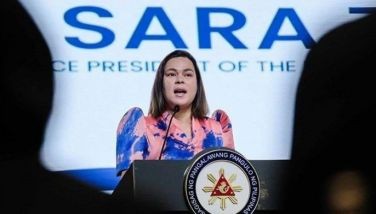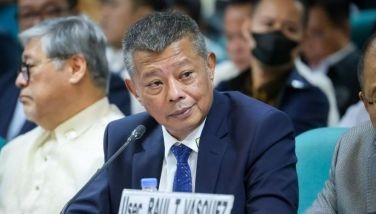‘Peso to recover in 3 months’
October 6, 2000 | 12:00am
President Estrada expressed confidence yesterday the peso would bounce back within the next two to three months, by which time the price of crude oil in the world market and the strong dollar should have stabilized to lessen pressure on regional currencies.
The President maintained this positive attitude a day after the peso fell to an all-time low of 46.61 to the dollar and dragged down with it most major stocks at the exchange.
To shore up interest rates and arrest further depreciation of the local currency, the policy-making Monetary Board (MB) raised reserve requirements yesterday by two percentage points.
Mr. Estrada pointed out that the peso, like the rest of the currencies in Southeast Asia and even Europe, has been feeling the pinch of the unusually strong US dollar.
"The problem is worldwide. Even the euro and currencies of rich nations have fallen much lower," he said.
Though extremely saddened, Mr. Estrada said the government can do very little to change the situation.
"But I am not losing heart. I believe that after two to three months, the peso will return to its previous level," he said.
In a press briefing at Malacañang, Press Secretary Ricardo Puno Jr. said the MB decided in an emergency meeting Wednesday night to raise reserve requirements of banks by two percentage points.
Puno said the decision was a monetary mechanism to mop up the excess liquidity in the country’s financial system.
Raising the reserve requirements could consequently effect higher interest rates to mitigate the peso fall, he said.
However, Puno clarified there is no final decision yet on whether or not the MB will raise lending rates as means to directly stave off further depreciation.
Analysts warned the other day that little stands in the way of the dollar breaching P47, especially if there is heavy speculative demand for dollars. By the end of the year, a number of banks and brokerages predict the peso would fall to 48 to $1. – Marichu Villanueva
The President maintained this positive attitude a day after the peso fell to an all-time low of 46.61 to the dollar and dragged down with it most major stocks at the exchange.
To shore up interest rates and arrest further depreciation of the local currency, the policy-making Monetary Board (MB) raised reserve requirements yesterday by two percentage points.
Mr. Estrada pointed out that the peso, like the rest of the currencies in Southeast Asia and even Europe, has been feeling the pinch of the unusually strong US dollar.
"The problem is worldwide. Even the euro and currencies of rich nations have fallen much lower," he said.
Though extremely saddened, Mr. Estrada said the government can do very little to change the situation.
"But I am not losing heart. I believe that after two to three months, the peso will return to its previous level," he said.
In a press briefing at Malacañang, Press Secretary Ricardo Puno Jr. said the MB decided in an emergency meeting Wednesday night to raise reserve requirements of banks by two percentage points.
Puno said the decision was a monetary mechanism to mop up the excess liquidity in the country’s financial system.
Raising the reserve requirements could consequently effect higher interest rates to mitigate the peso fall, he said.
However, Puno clarified there is no final decision yet on whether or not the MB will raise lending rates as means to directly stave off further depreciation.
Analysts warned the other day that little stands in the way of the dollar breaching P47, especially if there is heavy speculative demand for dollars. By the end of the year, a number of banks and brokerages predict the peso would fall to 48 to $1. – Marichu Villanueva
BrandSpace Articles
<
>
- Latest
- Trending
Trending
Latest
Trending
Latest
Recommended

































